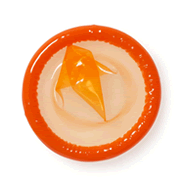Let’s face it, we aren’t always as nice to our condoms as we should be; we stuff them in pockets and leave them in hot cars or the bottom of our purse. That’s why before using a condom you should always check the expiration date and then give the wrapper a thorough inspection.
To make sure your condom is still intact, first press on the wrapper—you should feel a little cushion of air. If you can feel the air cushion it means that the outside of the wrapper has not been damaged or punctured. Next, while still pressing on the wrapper, feel for the slip-slide feeling of the lube. (Unfortunately this won’t work with unlubricated condoms.) When condoms are left in the heat or punctured, the lube can dry or leak out which in turn dries out the condom, weakening it and making it more likely to break in action.
Let’s face it, we aren’t always as nice to our condoms as we should be; we stuff them in pockets and leave them in hot cars or the bottom of our purse. That’s why before using a condom you should always check the expiration date and then give the wrapper a thorough inspection.
To make sure your condom is still intact, first press on the wrapper—you should feel a little cushion of air. If you can feel the air cushion it means that the outside of the wrapper has not been damaged or punctured. Next, while still pressing on the wrapper, feel for the slip-slide feeling of the lube. (Unfortunately this won’t work with unlubricated condoms.) When condoms are left in the heat or punctured, the lube can dry or leak out which in turn dries out the condom, weakening it and making it more likely to break in action.

